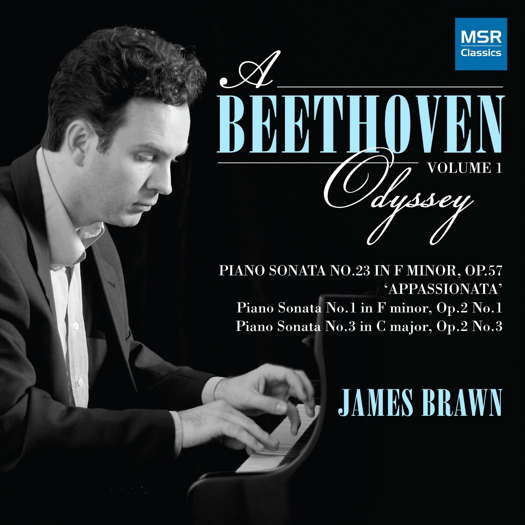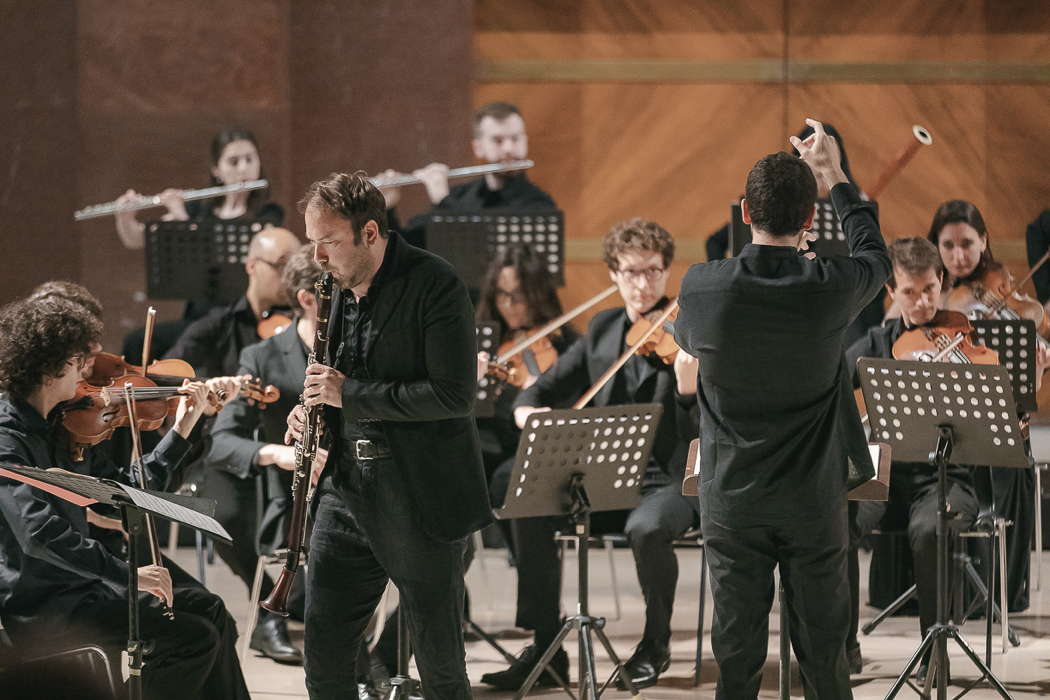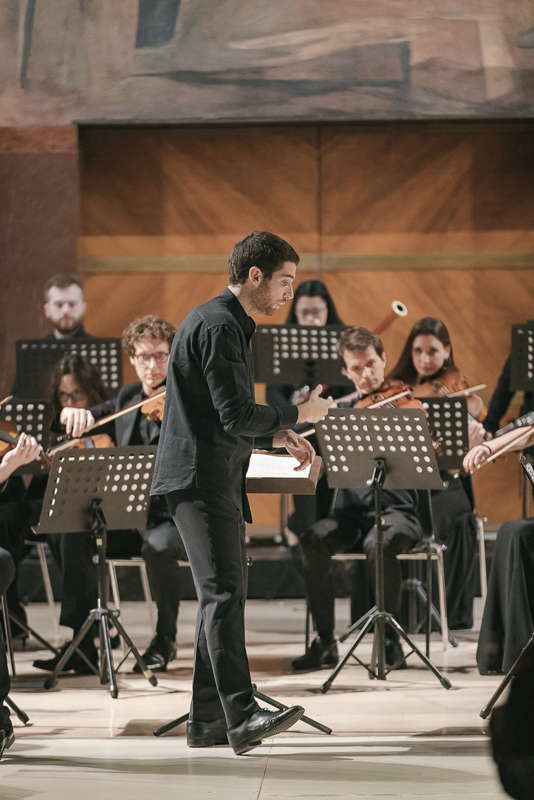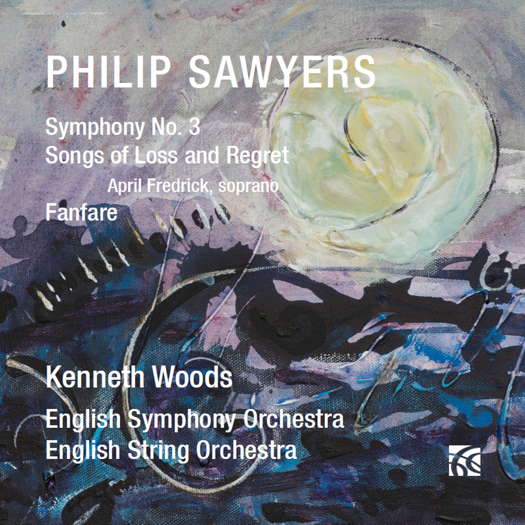 SPONSORED: CD Spotlight. Masterfully Controlled - James Brawn's Beethoven Odyssey impresses Andrew Schartmann.
SPONSORED: CD Spotlight. Masterfully Controlled - James Brawn's Beethoven Odyssey impresses Andrew Schartmann.
All sponsored features >>
Major Success for a Young Orchestra
GIUSEPPE PENNISI listens to Mozart, played by the Canova Chamber Orchestra
The Canova Chamber Orchestra (Orchestra da Camera Canova), now 'in residence' at the Istituzione Universitaria dei Concerti (IUC) in Rome - as well as at Verbano Musica Estate in Locarno in Switzerland - opened the IUC's 2021-22 concert season in October with a program centered on Beethoven and returned to close it with a program dedicated to Mozart. While in October there were strong restrictions on the capacity of the hall and the distancing of spectators, on 14 May 2022, with restrictions largely removed, the hall was full, also because the concert was expected after the October success. This has undoubtedly given additional adrenaline to the young musicians.
On the sidelines of the 2 October 2021 inaugural concert, we recalled that Orchestra da Camera Canova is very recent, founded in 2014 by Enrico Saverio Pagano (born in 1995); the average age of the orchestra's musicians is twenty-five. (Read 'A star is born', 4 October 2021.) They have deserved various awards and have recently launched a debut album (for Sony) dedicated to the rediscovery of Giovanni Paisiello (1740-1816). Orchestra da Camera Canova is not a laboratory for students, but a new professional reality that has already taken its first steps with outstanding results: it has a high artistic level and deserves to be concretely supported in its growth path through a period 'in residence' at one of the finest musical institutions of the Italian capital, the IUC. It is an excellent addition to Italy's major orchestras.
The first part of the concert was a real rarity: the Concerto for clarinet and orchestra in A major, K 622, in the version reconstructed by Tommaso Lonquich for basset clarinet to make it as similar as possible to the original. As in the clarinet quintet written two years earlier, Mozart chose a basset clarinet as his solo instrument. This instrument differs from the normal clarinet in A by the extension in the bass register, which exceeds by a major third that of the soprano clarinet, reaching C2 instead of E2. Additional notes are also called basset notes.

Tommaso Lonquich performing Mozart with Orchestra da Camera Canova conducted by Enrico Saverio Pagano at the Aula Magna della Sapienza in Rome on 14 May 2022. Photo © 2022 Andrea Caramelli and Federico Priori
Given the rarity, even at the time, of basset clarinets, the clarinet part was soon transcribed for the common clarinet in A. The original score for basset clarinet has been lost. Only in the mid-twentieth century did some clarinetists attempt to restore the original version of the clarinet part with a series of passages in the bass. At the same time, some builders undertook the manufacture of modern basset clarinets. Both versions are nowadays performed in concerts. More and more internationally renowned soloists use the basset clarinet, be it a modern instrument or the reproduction of a historical instrument. The clarinet expresses itself with melodies now sweet, now with dramatic accents, but the tone is always calm. Of the three movements that make up the concerto, the adagio is the one in which the melody touches the highest peaks, reaching moments of intimacy and poignant melancholy.
In 1791, this concerto was an innovative composition, almost experimental, also because Mozart maintained the structure in three movements but integrated it with refined solutions then little explored. For example, the second movement, a very passionate Adagio, is presented by the soloist but is supplemented by a delicate string accompaniment – a solution made possible because the orchestra is deprived of instruments - oboes, trumpets and trombones - that could have produced a timbre contrast with the clarinet, reducing its expressive scope. There was excellent dialogue between the soloist, Tommaso Lonquich, and the orchestra. At the end of the first part, the requests for an encore were responded with a short, highly applauded quintet for strings and clarinet.
The Symphony No 40 in G minor K 550, sometimes called 'La Grande', is the best known symphony by Mozart. Robert Schumann considered that it approached the ideal criteria of Greek beauty. Originally considered as an example of grace and lightness, perhaps confusing the simplicity with which the various melodies develop and follow, it appears today as strongly introspective and of high dramatic content. Charles Rosen calls the symphony 'a work of passion, violence and pain'. The minuet is an example of this drama and anticipates those romantic atmospheres that will be later found in Beethoven and that here appear restrained, almost hidden. The German musicologist Alfred Einstein calls it 'heroically tragic'.
In the rendering by Enrico Saverio Pagano and Orchestra da Camera Canova, the drama is accentuated in the passage from the first movement (molto allegro) to the second (andante) and then is resumed in the overwhelming finale - an allegro assai which has a tragic background and anticipates romanticism.

Enrico Saverio Pagano conducts Orchestra da Camera Canova on 14 May 2022. Photo © 2022 Andrea Caramelli and Federico Priori
The audience reacted with ovations and requests for encores to which the conductor and orchestra responded with the last movement of the Divertimento, K 338, one of Mozart's last compositions before being evicted from Salzburg and its Court.
Copyright © 20 May 2022
Giuseppe Pennisi,
Rome, Italy

ISTITUZIONE UNIVERSITARIA DEI CONCERTI




